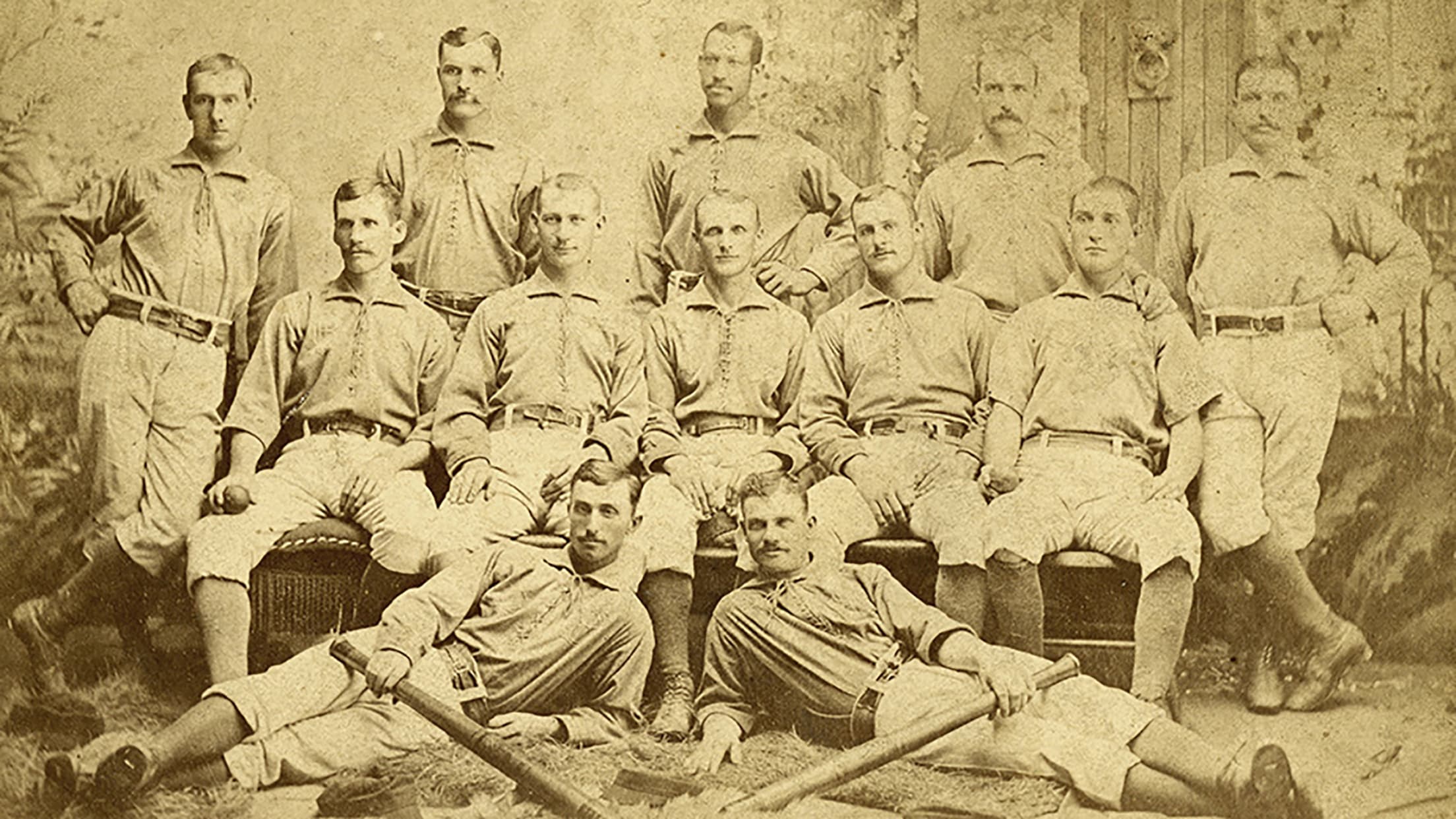African-American players banned
African-American players banned from professional white baseball

- Write a paragraph or create a list that shares your knowledge of the Negro Leagues.
- What teams/organizations do you believe are represented by the term Negro Leagues?
- As you read through this page and others, see how you can update your initial interpretation of Negro League baseball.
African-American baseball players were not allowed to play in what would come to be known as Major League Baseball until 1947 as Jackie Robinson broke the color barrier when he took the field for the Brooklyn Dodgers. But when was the rule written that excluded African-American players from the game? The truth is no rule was expressly written to exclude African-American players. The ban can be traced back to deep-rooted prejudices present in the United States during the late 19th and early 20th centuries. In fact, a team in Philadelphia is often cited as setting baseball on the course to segregation.
On October 16, 1867 the Pennsylvania State Convention of Baseball in Harrisburg denied admission to the Philadelphia Pythian Baseball Club thus ushering in the era of segregated baseball. Though not a formal ban on African-American teams or players, the feeling that whites and blacks should play on separate teams began to gain steam.
The issue of segregation in baseball was pushed to the forefront on August 10, 1883 when Adrian "Cap" Anson of the Chicago White Stockings (now the Cubs), a top baseball figure who was enshrined in the Baseball Hall of Fame in 1939, refused to play in an exhibition game against the minor league Toledo Blue Stockings if they played their African-American catcher Moses Fleetwood "Fleet" Walker. The Blue Stockings, who originally planned to rest Walker, instead moved him to play centerfield. Anson eventually did not follow though on his threat but only because he learned he would lose the day's pay.
Anson would continue to push to have African-Americans excluded from baseball with many white players, due to Anson's prominence in the sport and their own racist beliefs, backing the notion. On July 14, 1887 during an exhibition game against the Newark Little Giants, Anson refused to play if African-American pitcher George Stovey took the mound as scheduled. Anson's threat to sit led to Stovey being scratched from the game. Ironically, while Anson was taking his stand, the International League, to which the Little Giants belonged, voted to ban the future recruitment and signing of African-American players. The National League and American Association, though nothing formal was written into any rulebook, followed suit with a "gentleman's agreement" that effectively banned African-Americans from the professional leagues for the next 60 years.
Moses Fleetwood "Fleet" Walker is credited as being the first player to break the color barrier in baseball when his team, the Toledo Blue Stockings joined the American Association in 1884.
- What events led to the unofficial banning of blacks in what would become Major League Baseball?
- What is a "gentleman's agreement"?
- What role did Philadelphia play in the segregation of baseball?

